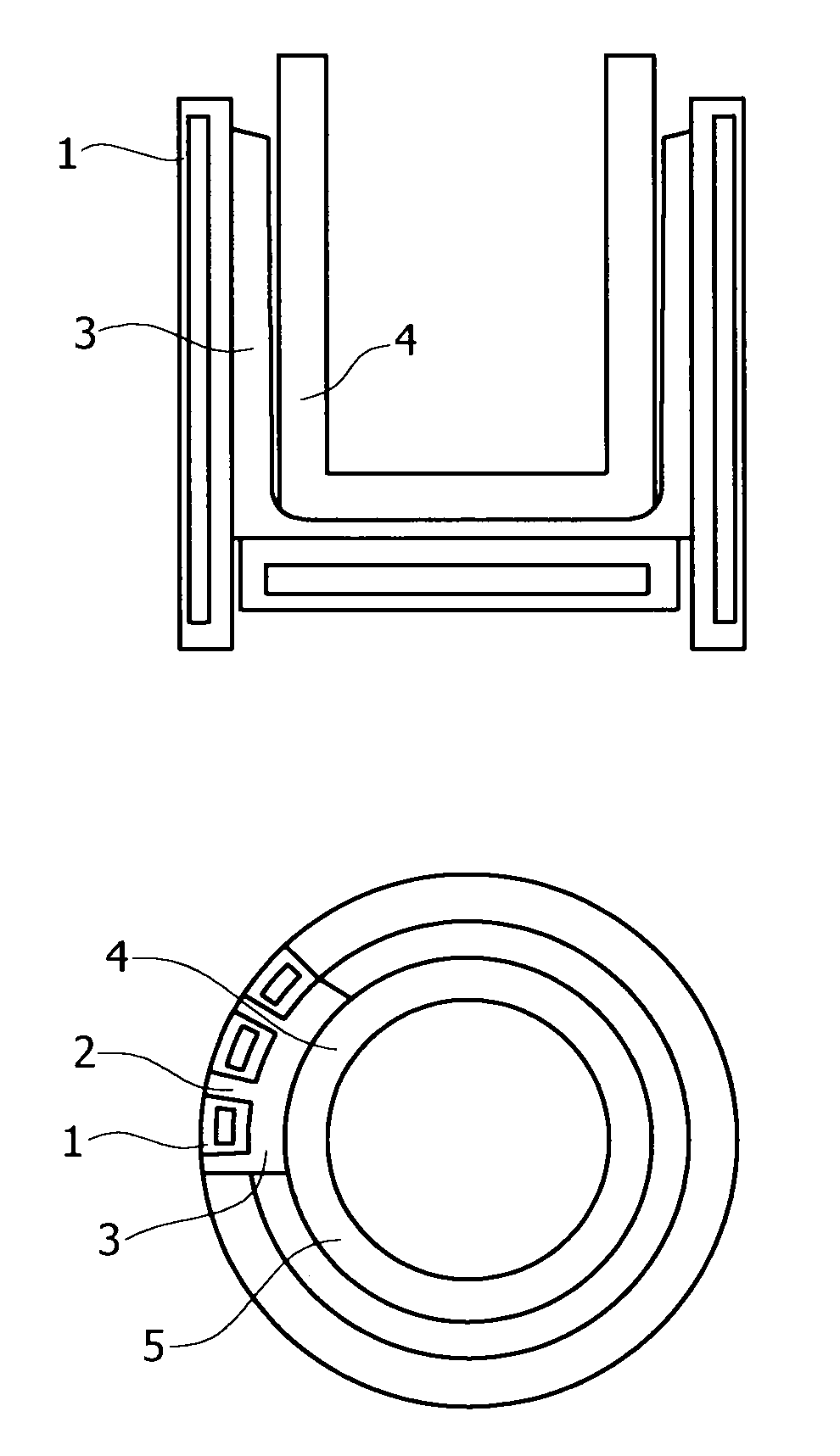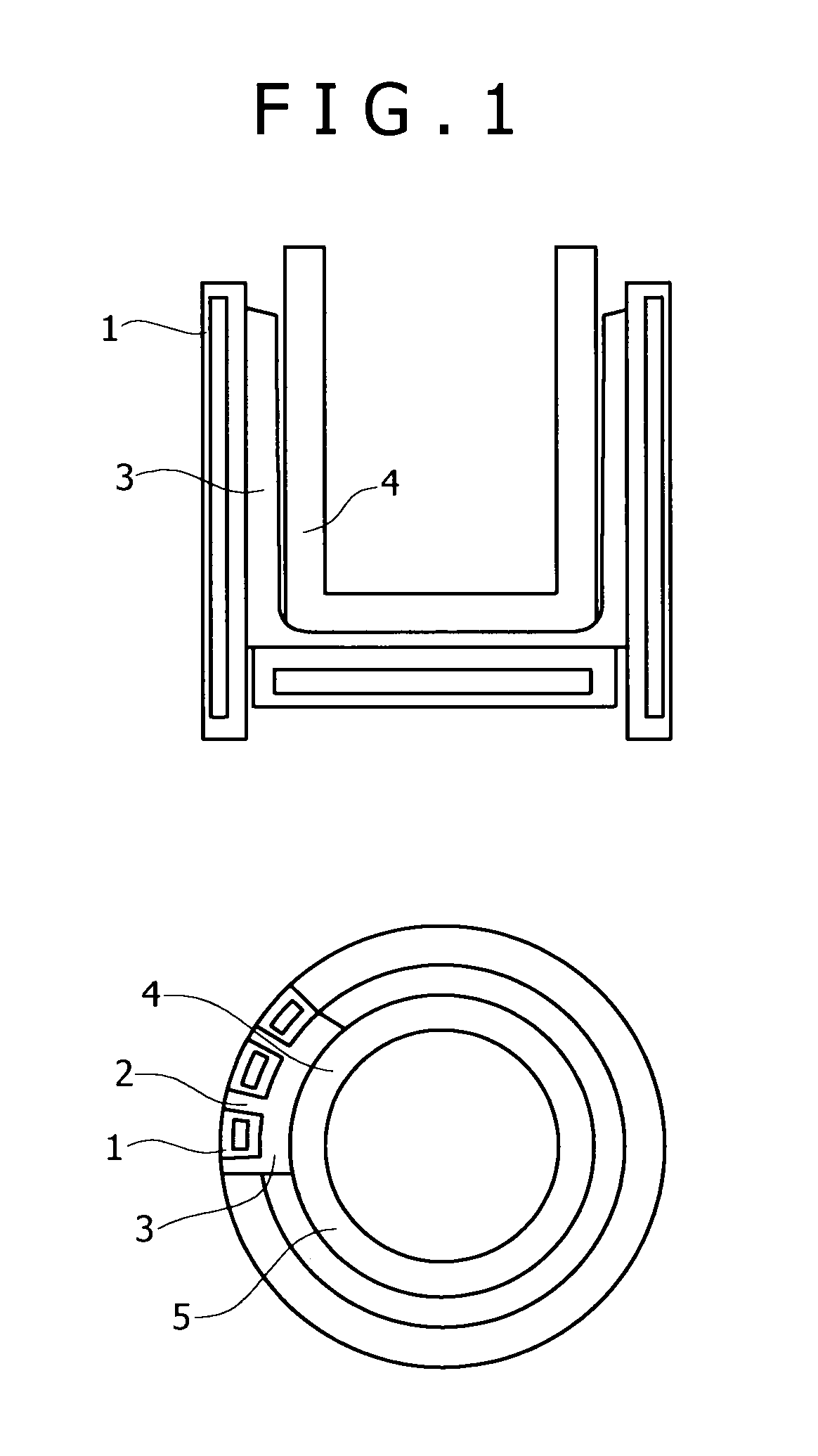Induction melting apparatus employing halide type crucible, process for producing the crucible, method of induction melting, and process for producing ingot of ultrahigh-purity fe-, ni-, or co-based alloy material
a technology of induction melting and crucible, which is applied in the direction of electrical equipment, lighting and heating equipment, furnace linings, etc. it can solve the problems of high refining flux, water-cooled copper crucible, melt-damage of crucible refractories making up crucible, etc., and achieve safe and reliable high refining performance, promote secondary refining, and widen the application range of induction-melting.
- Summary
- Abstract
- Description
- Claims
- Application Information
AI Technical Summary
Benefits of technology
Problems solved by technology
Method used
Image
Examples
working example
[0068]In the case of this working example, the primary melting was executed with the use of a cold-crucible induction-melting apparatus of the following facility specification, provided with a vacuum chamber, thereby melting 50 kg of stainless steel (SUS316L) for refining. With respect to each of comparative examples, there was conducted a melting test on the same variety of stainless steel as a target.
[0069]Max. Output: 400 kW
[0070]Power supply frequency: 3 kHz
[0071]Water-cooled copper crucible: inside dia.; φ210 mm, the number of segments; 24 pieces (slit interval; 0.5 mm)
[0072]Melting capacity: stainless steel 40 to 50 kg / heat
(Primary Melting)
[0073]First, electrolytic iron was charged into the water-cooled copper crucible of the cold-crucible induction-melting apparatus to be subjected to induction melting in a vacuum. In this process step, there was observed a state of molten metal frothing up as a result of oxygen in the electrolytic iron coming to react with charged carbon, an...
PUM
| Property | Measurement | Unit |
|---|---|---|
| distance | aaaaa | aaaaa |
| pressure | aaaaa | aaaaa |
| temperature | aaaaa | aaaaa |
Abstract
Description
Claims
Application Information
 Login to View More
Login to View More - R&D
- Intellectual Property
- Life Sciences
- Materials
- Tech Scout
- Unparalleled Data Quality
- Higher Quality Content
- 60% Fewer Hallucinations
Browse by: Latest US Patents, China's latest patents, Technical Efficacy Thesaurus, Application Domain, Technology Topic, Popular Technical Reports.
© 2025 PatSnap. All rights reserved.Legal|Privacy policy|Modern Slavery Act Transparency Statement|Sitemap|About US| Contact US: help@patsnap.com


